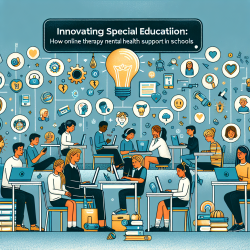Introduction
Driving is a rite of passage for many teenagers, but it also comes with significant risks. According to the CDC, motor vehicle crashes are a leading cause of death for teens in the United States. Teens with traffic violations are at an even higher risk for accidents. The ProjectDRIVE study offers innovative insights into improving driving practices among high-risk teen drivers.
Understanding ProjectDRIVE
ProjectDRIVE is a randomized controlled trial aimed at enhancing safe driving behaviors among teens with traffic violations. The study focuses on improving parent-teen communication and utilizing in-vehicle feedback technology to reduce risky driving behaviors and recidivism.
Key Findings
The study revealed several critical insights:
- Real-Time Feedback: Teens receiving real-time feedback through in-vehicle devices showed a reduction in risky driving events.
- Parent Training: Parents trained in communication strategies significantly improved the frequency and quality of discussions about safe driving with their teens.
- Recidivism Reduction: Combining feedback technology with parent training decreased the likelihood of repeat traffic violations among teens.
Practical Applications for Practitioners
Practitioners can leverage these findings to enhance their interventions:
- Incorporate Technology: Utilize in-vehicle feedback devices to provide teens with real-time insights into their driving habits. This approach can be a powerful tool in reducing risky behaviors.
- Enhance Communication: Train parents in effective communication strategies. Encourage open-ended questions, active listening, and collaborative problem-solving to foster meaningful discussions about driving safety.
- Tailored Interventions: Develop interventions that target high-risk teens specifically, rather than a one-size-fits-all approach. Tailored strategies can address the unique challenges faced by teens with traffic violations.
Encouraging Further Research
While ProjectDRIVE offers valuable insights, further research is needed to explore long-term impacts and scalability of these interventions. Practitioners are encouraged to collaborate with researchers to develop and test new strategies that can be integrated into existing programs.
Conclusion
ProjectDRIVE highlights the potential of combining technology with enhanced parent-teen communication to improve driving practices among high-risk teens. By implementing these strategies, practitioners can contribute to safer roads and better outcomes for young drivers.
To read the original research paper, please follow this link: ProjectDRIVE: study protocol for a randomized controlled trial to improve driving practices of high-risk teen drivers with a traffic violation.










